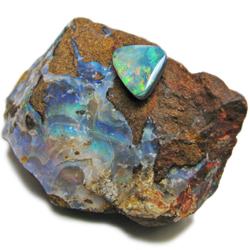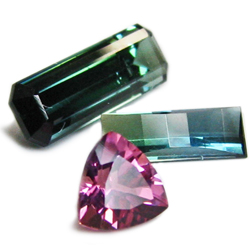
October

Opal
Opals are well known for their unique “play-of-color”, explained in the 1960s when scientists discovered that they are composed of microscopic silica spheres that diffract light to display various colors of the rainbow. Opals are often referred to by their “body color”, either black or white, which provides the background for the diverse display of colors that appear within the stone. Fire Opal, orange or red opals that may or may not show a play of color, and Boulder Opal, thin opal cut with the sandstone/ironstone matrix left on the back, are two of the most well-known opals though many other opal varieties exist. Australia produces 95% of the world’s supply of opal so it’s not surprising that opal is considered to be that country’s national gemstone. Also, according to an old Australian Aboriginal legend, opals were formed under the feet of the Creator when he came down from the heavens on a rainbow to deliver a message of peace for all mankind.
Opals are fragile stones, prone to breakage, and must be worn with care, which may be why some believe that it is unlucky to wear an opal unless it is your birthstone. In the past, however, opals were considered very lucky stones and in the Middle Ages people believed that the opal possessed the powers of each gemstone whose color appeared within the gemstone. The ancient Greeks believed opals gave their owners the gift of prophecy and guarded them from disease; ancient eastern cultures regarded opals as sacred, embodying the spirit of truth; and Europeans have long considered opals as a symbol of hope purity, and truth.
Other October Birthstones

Print